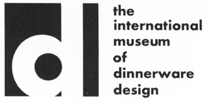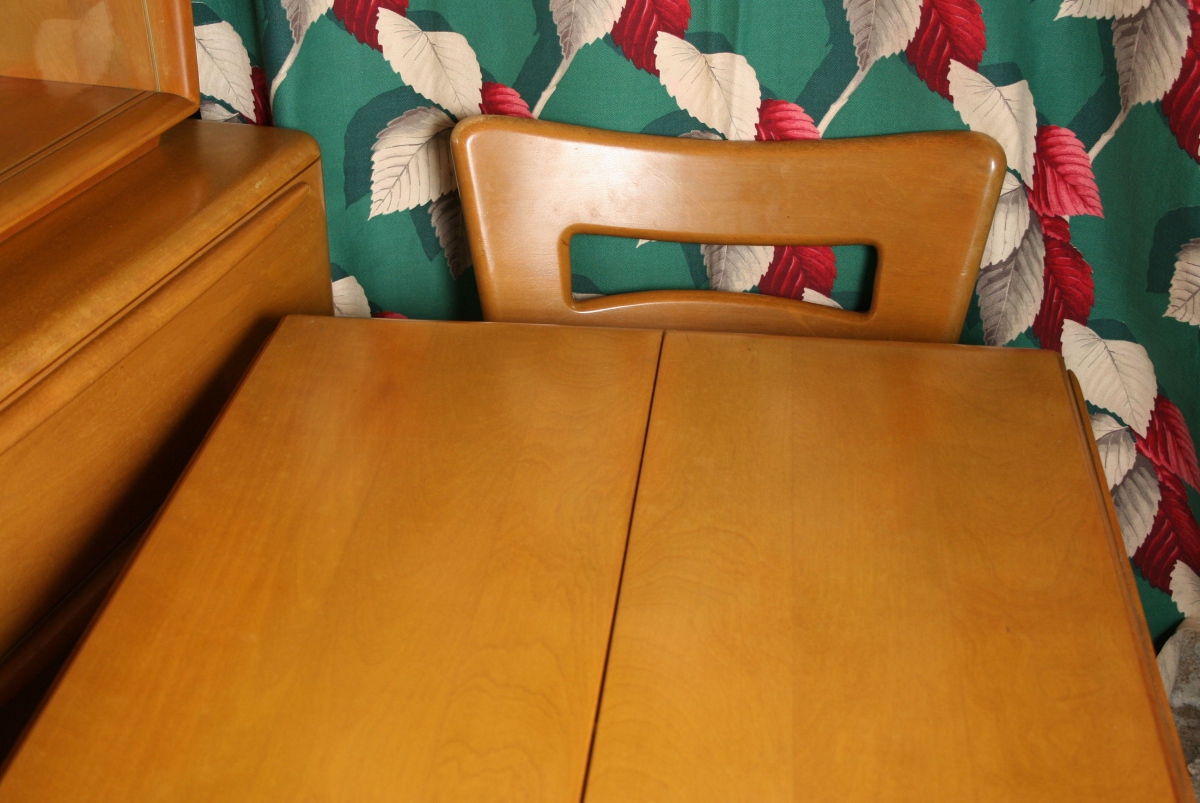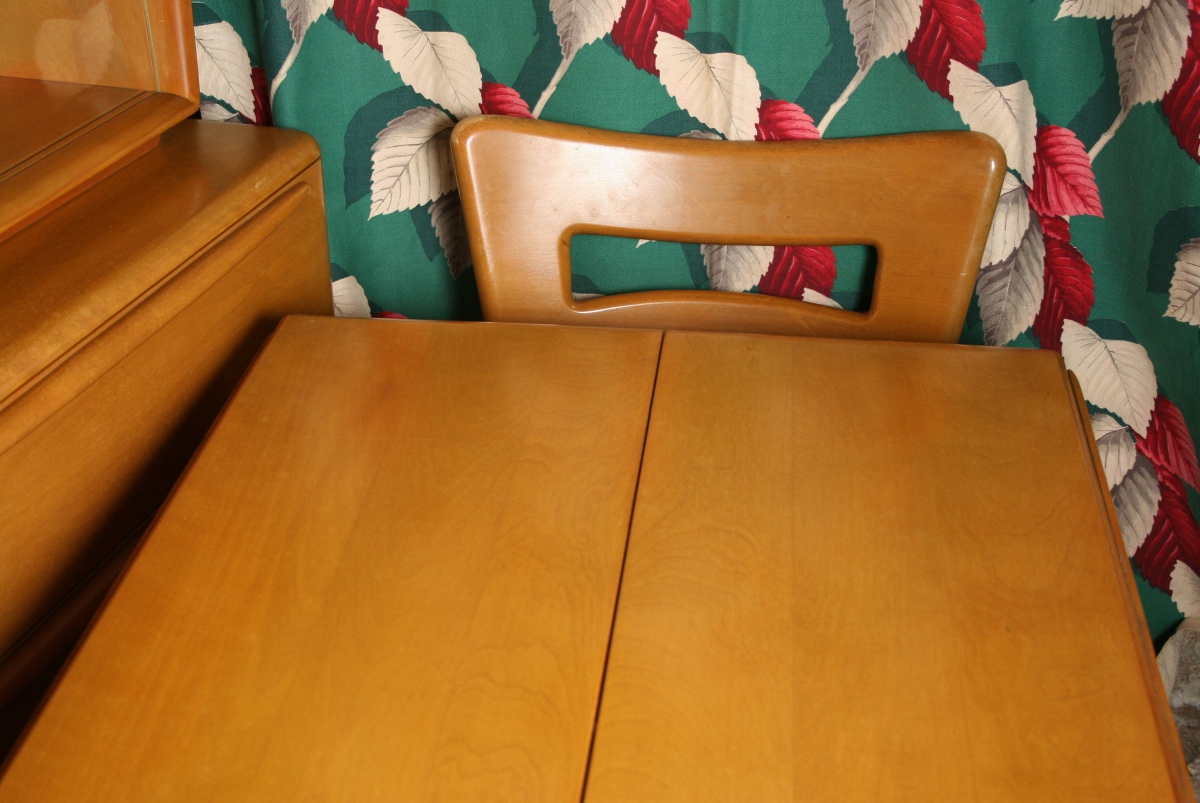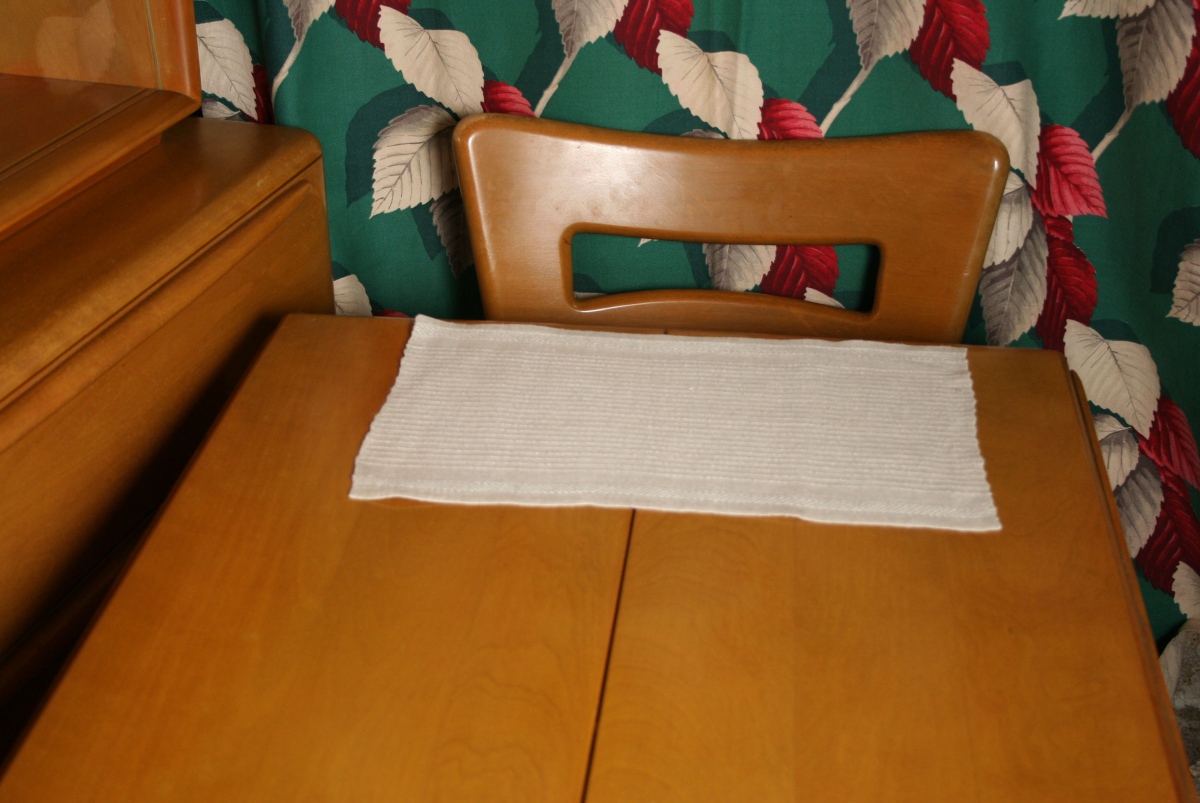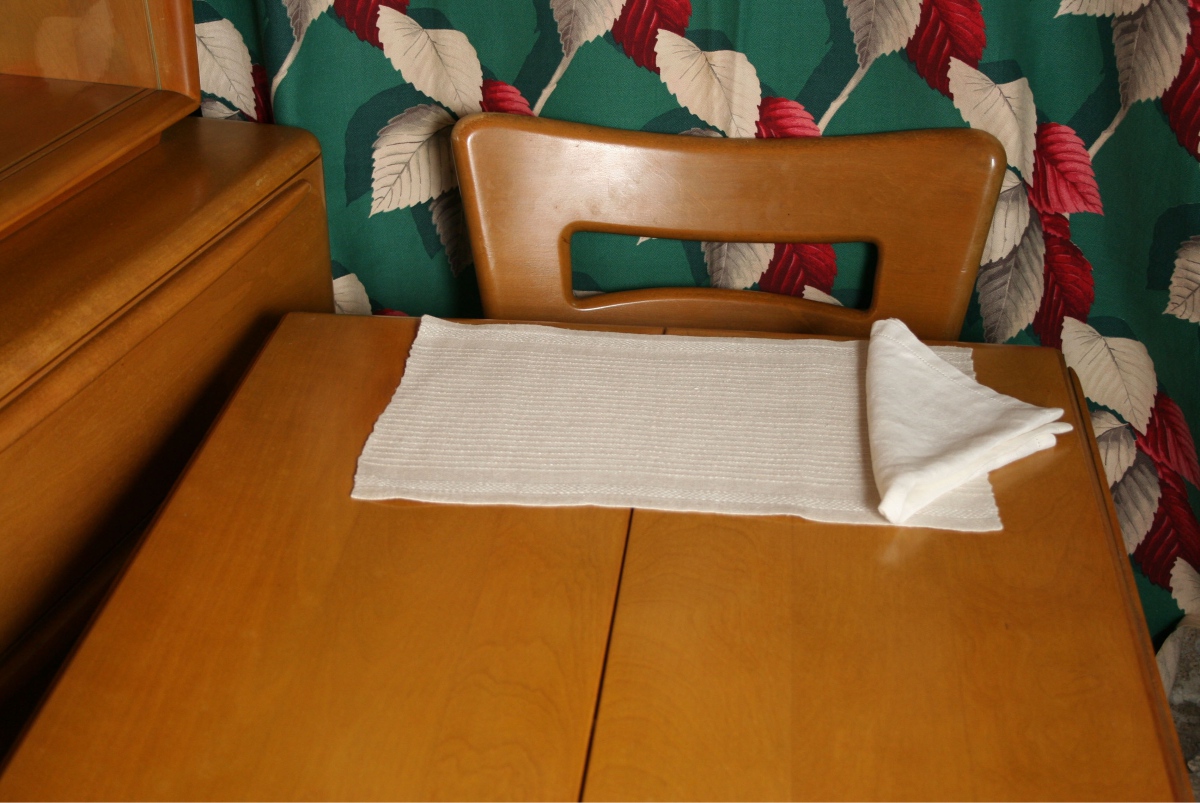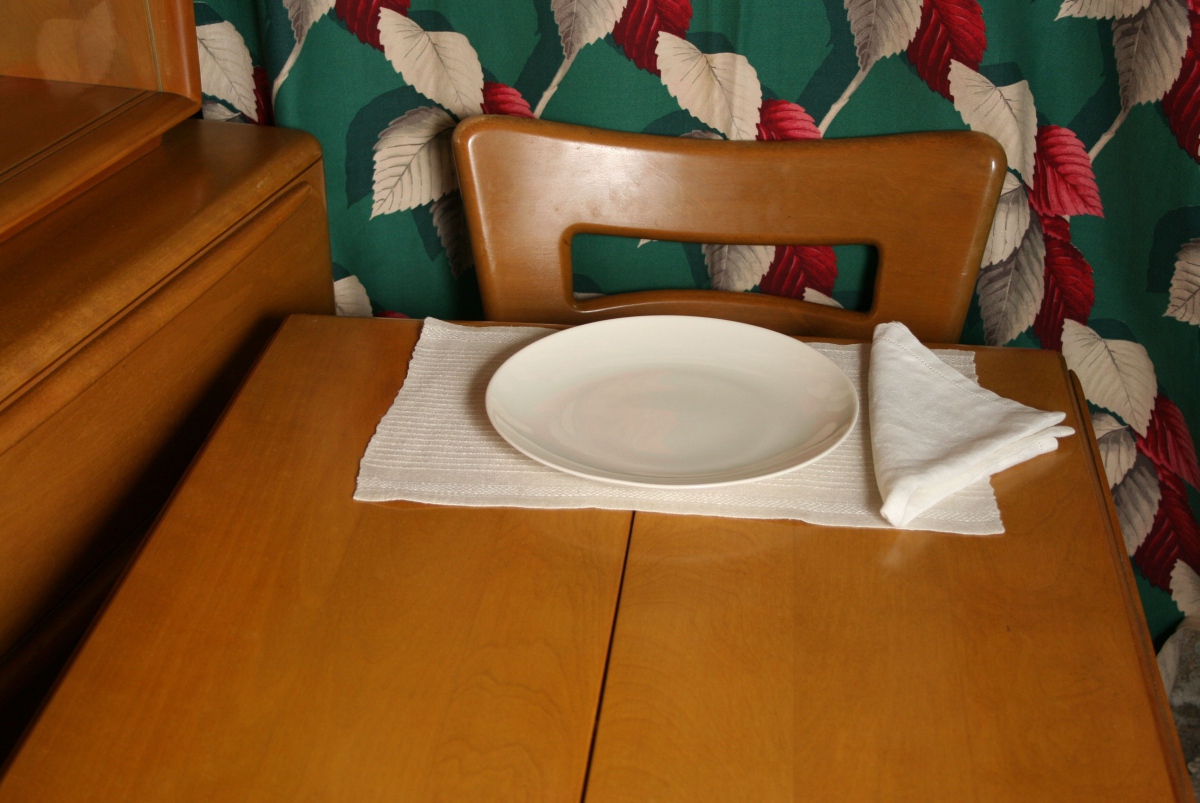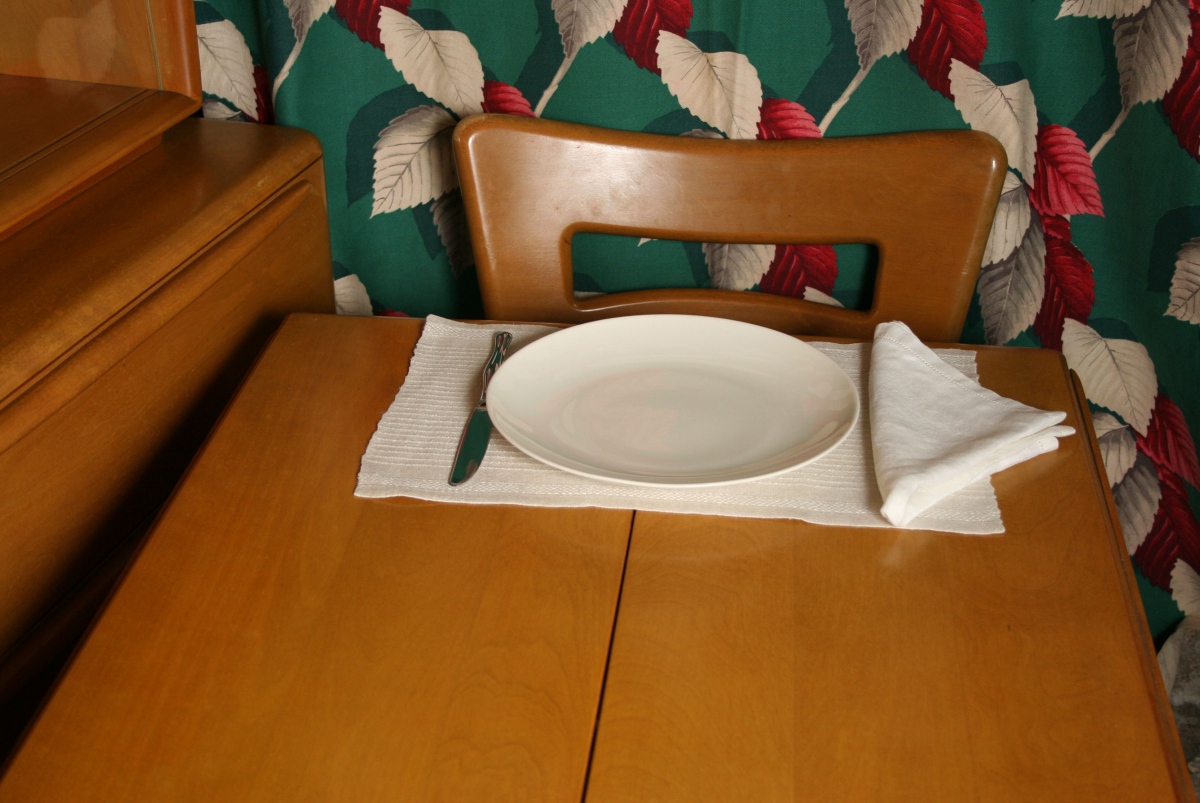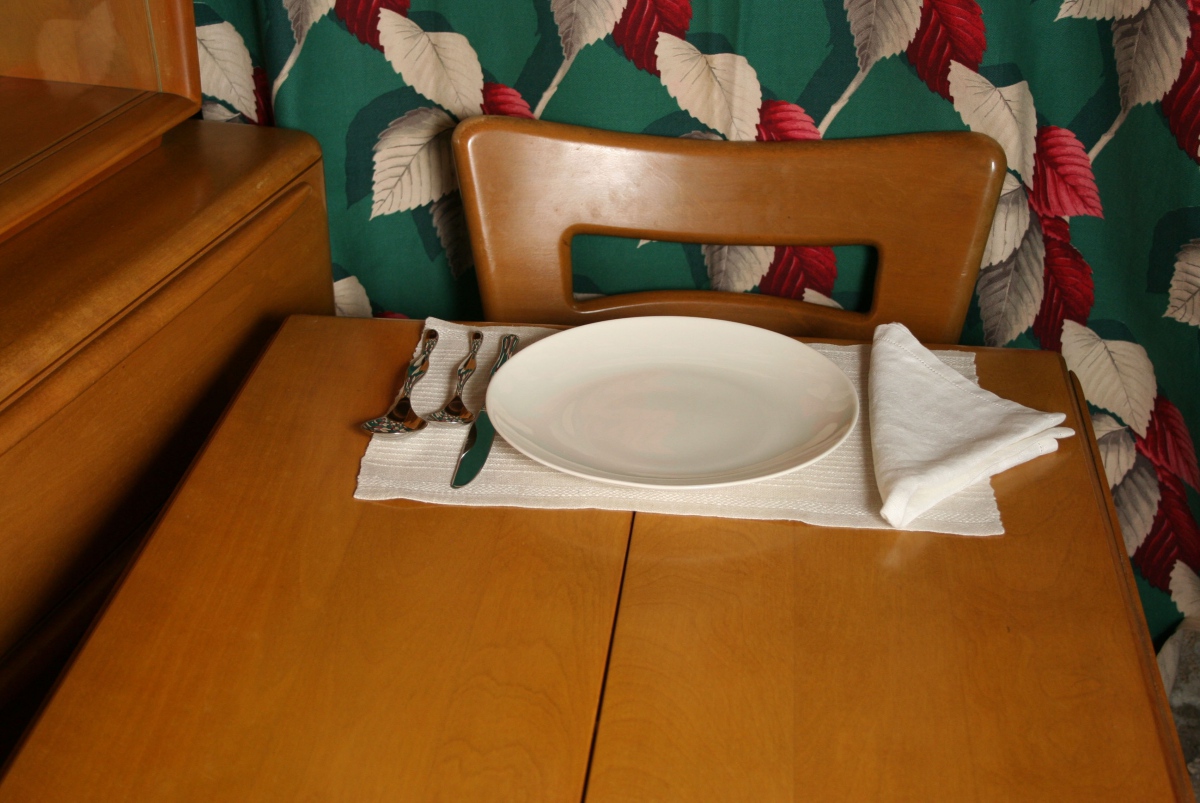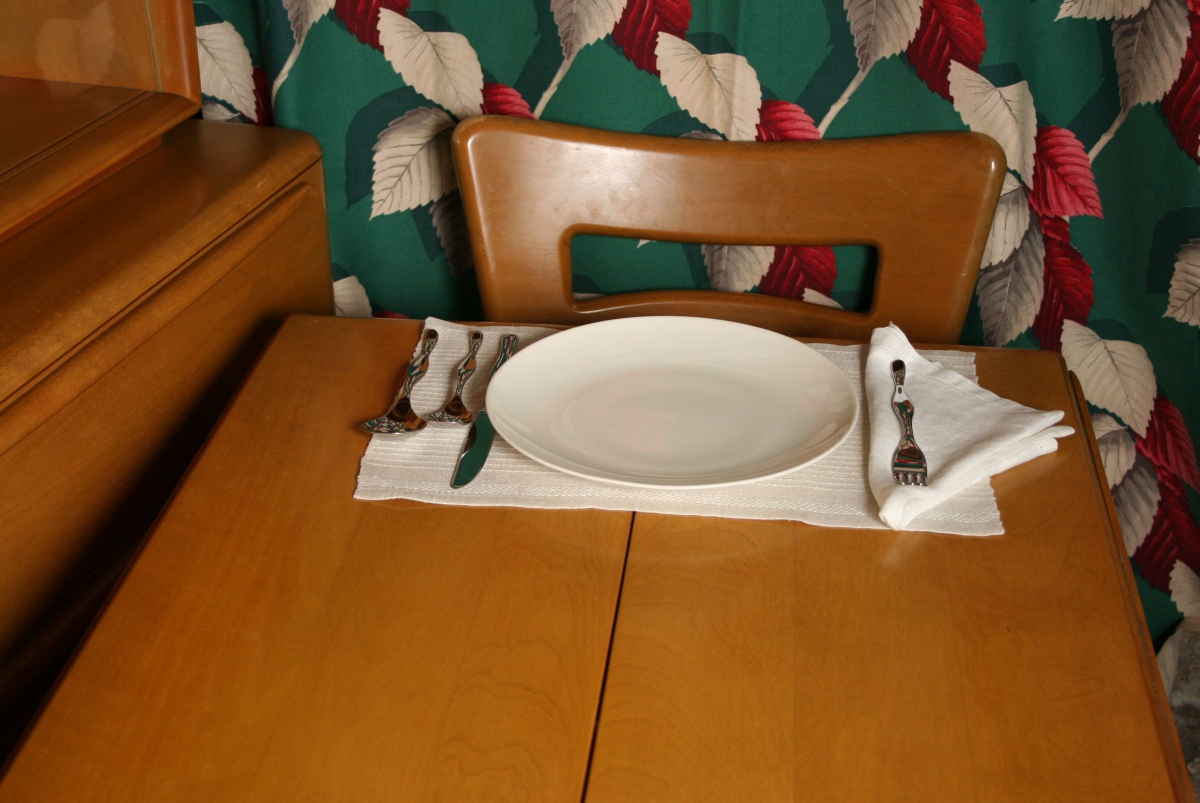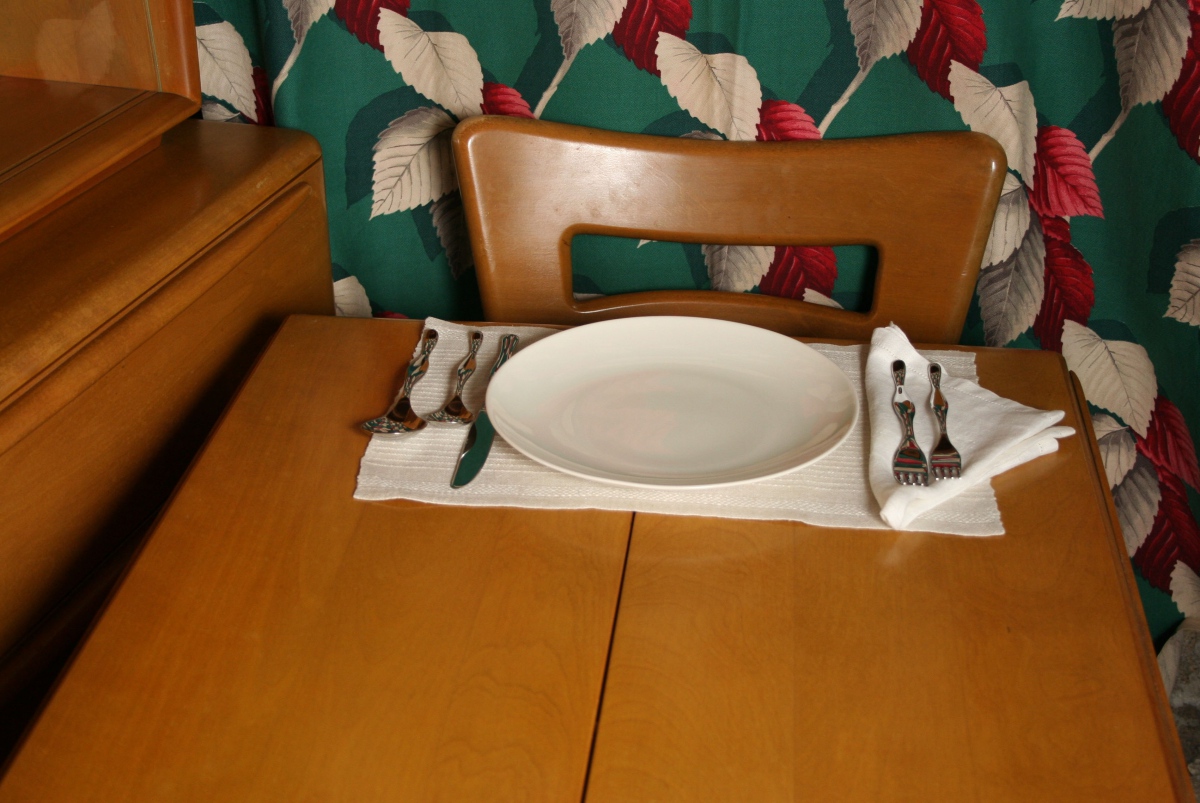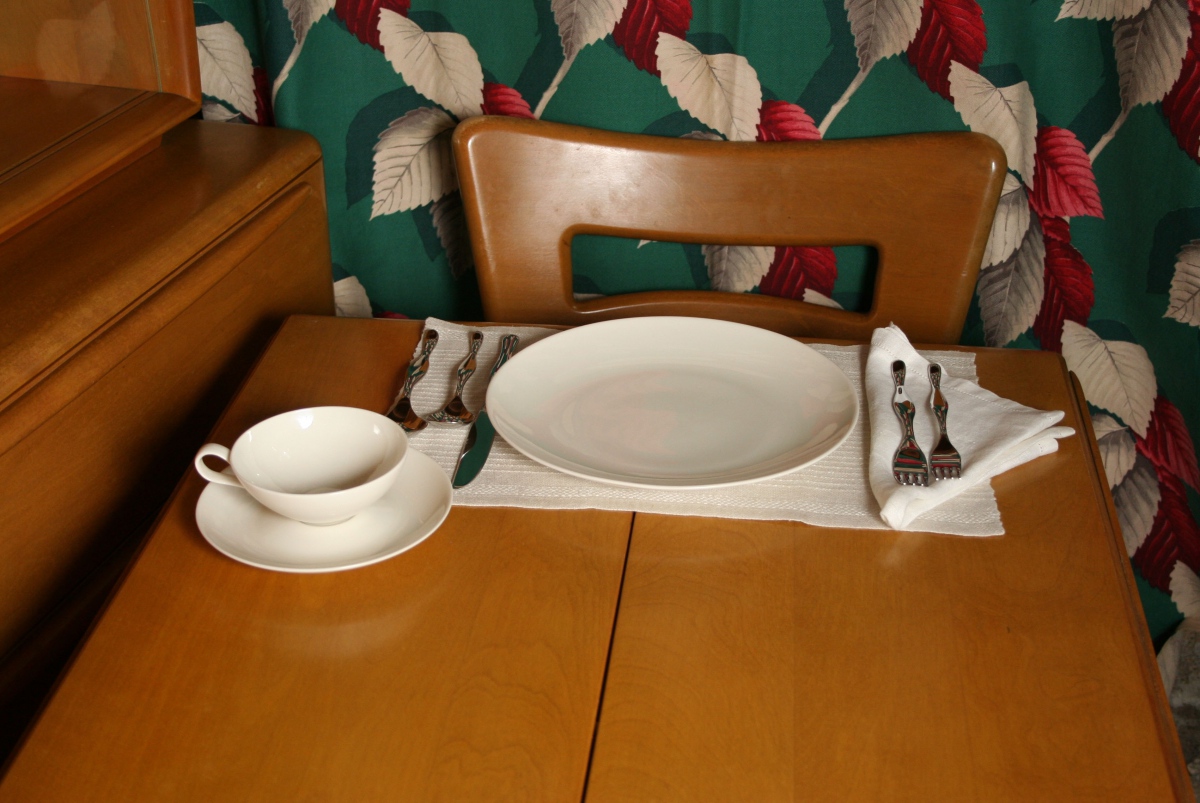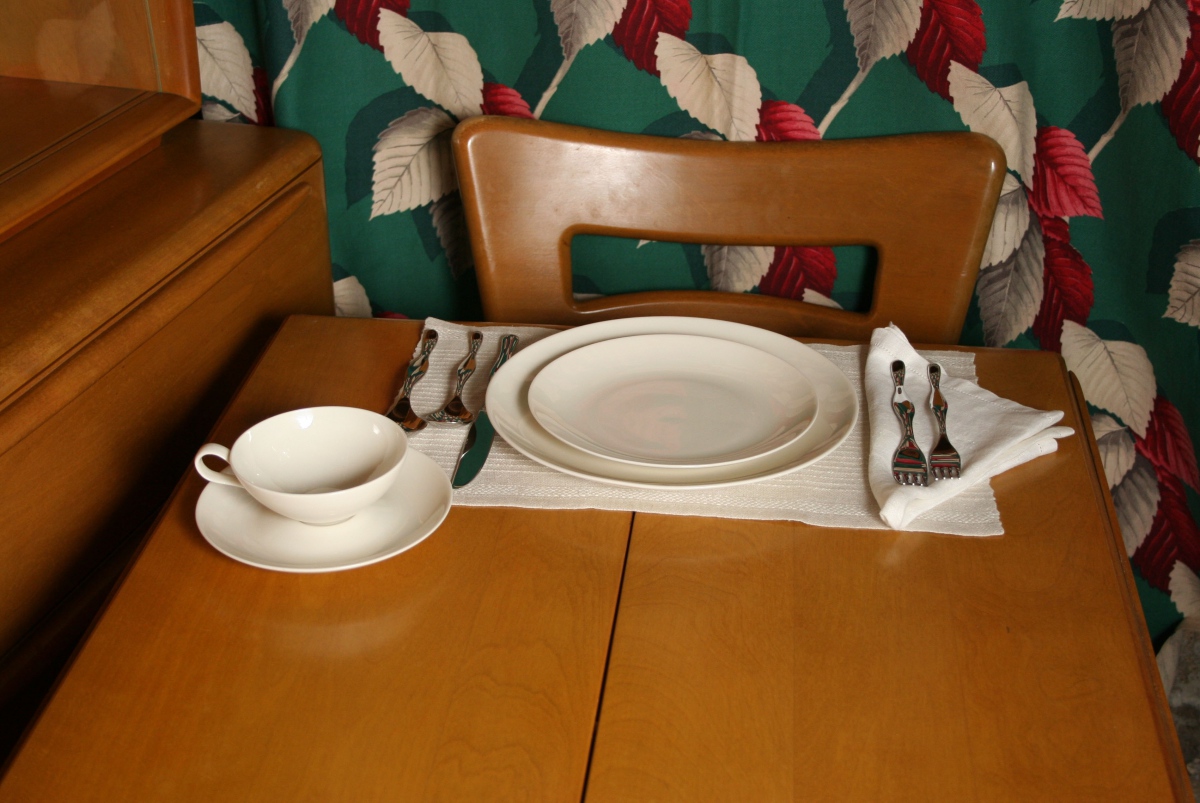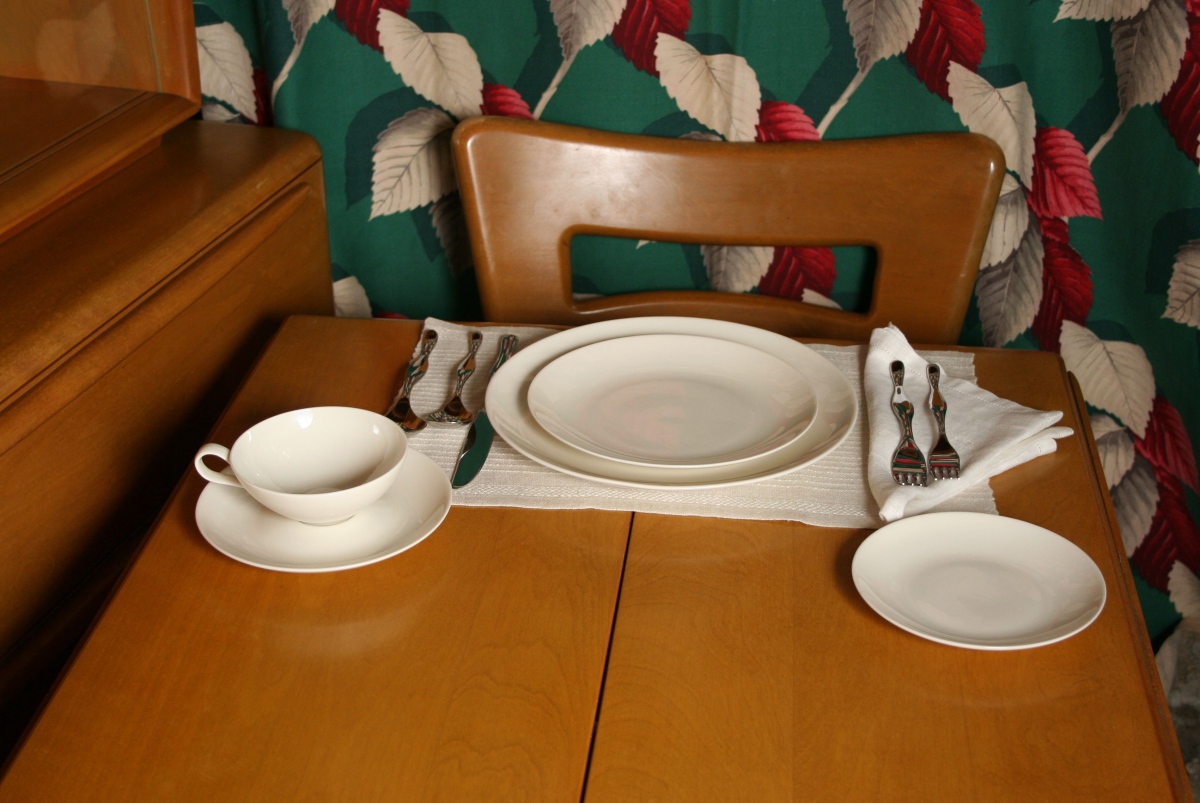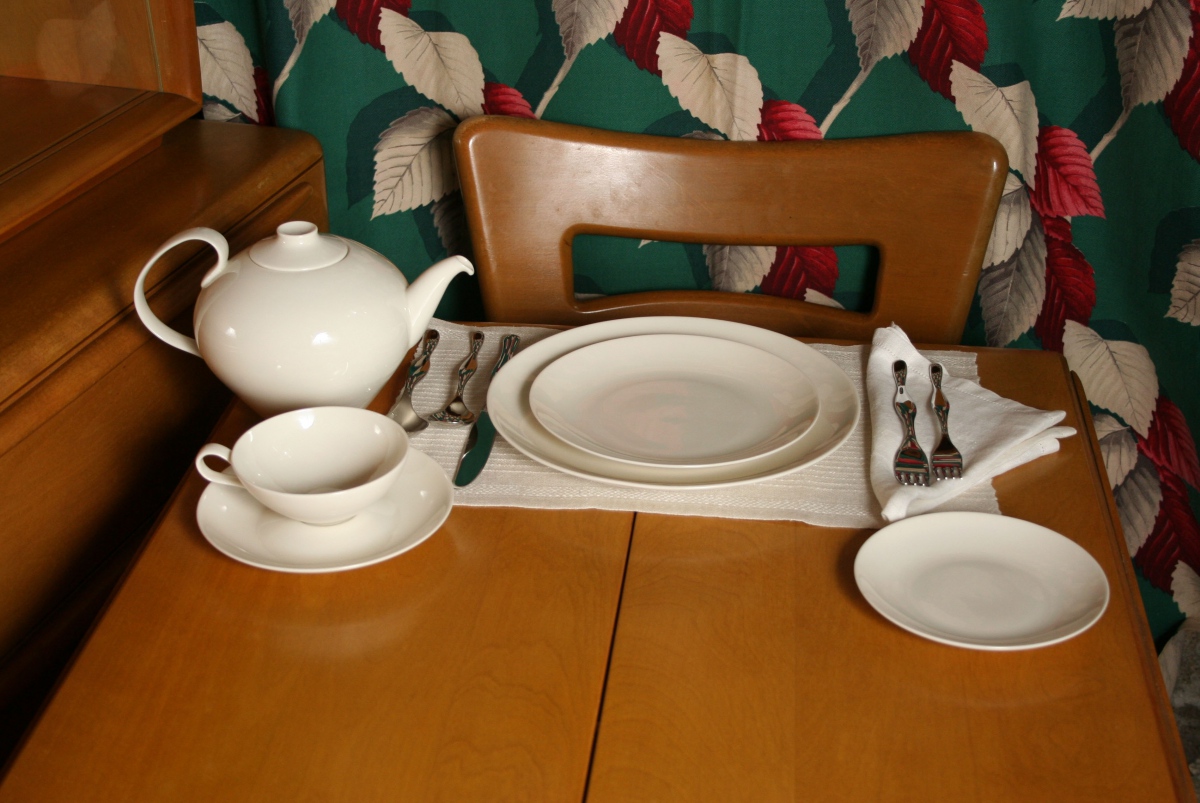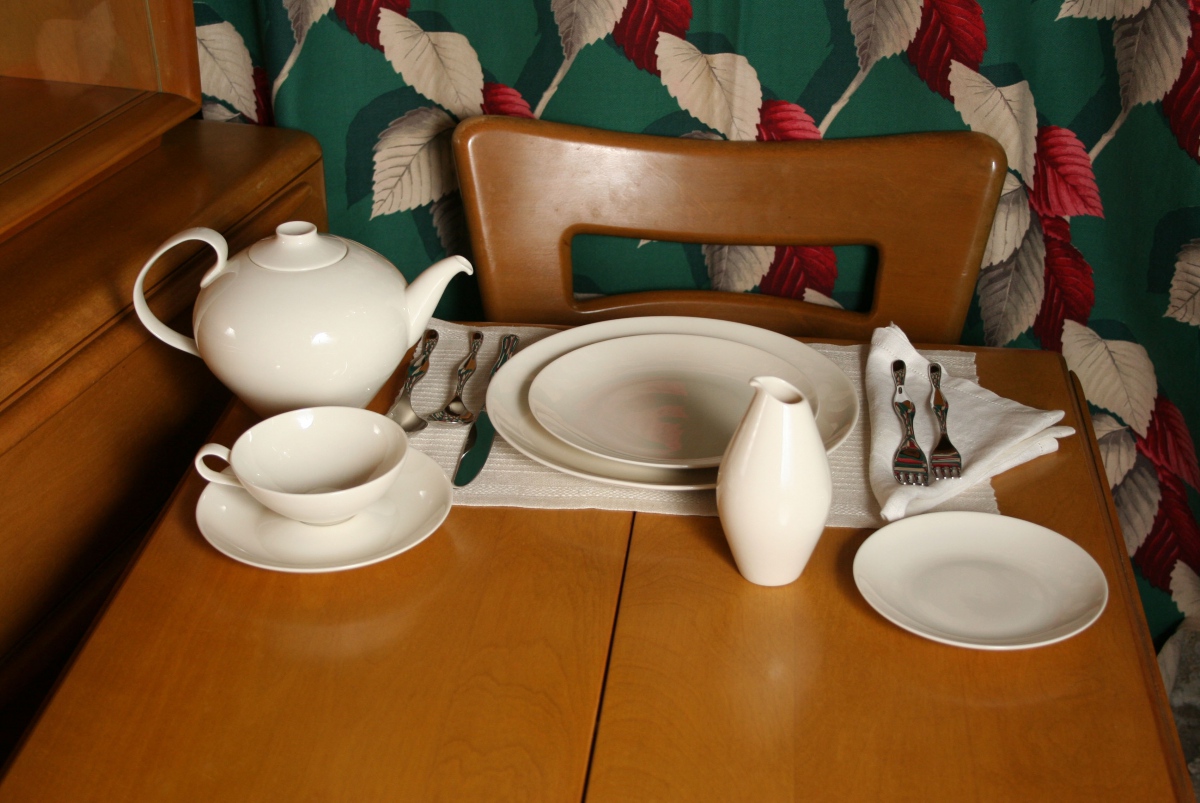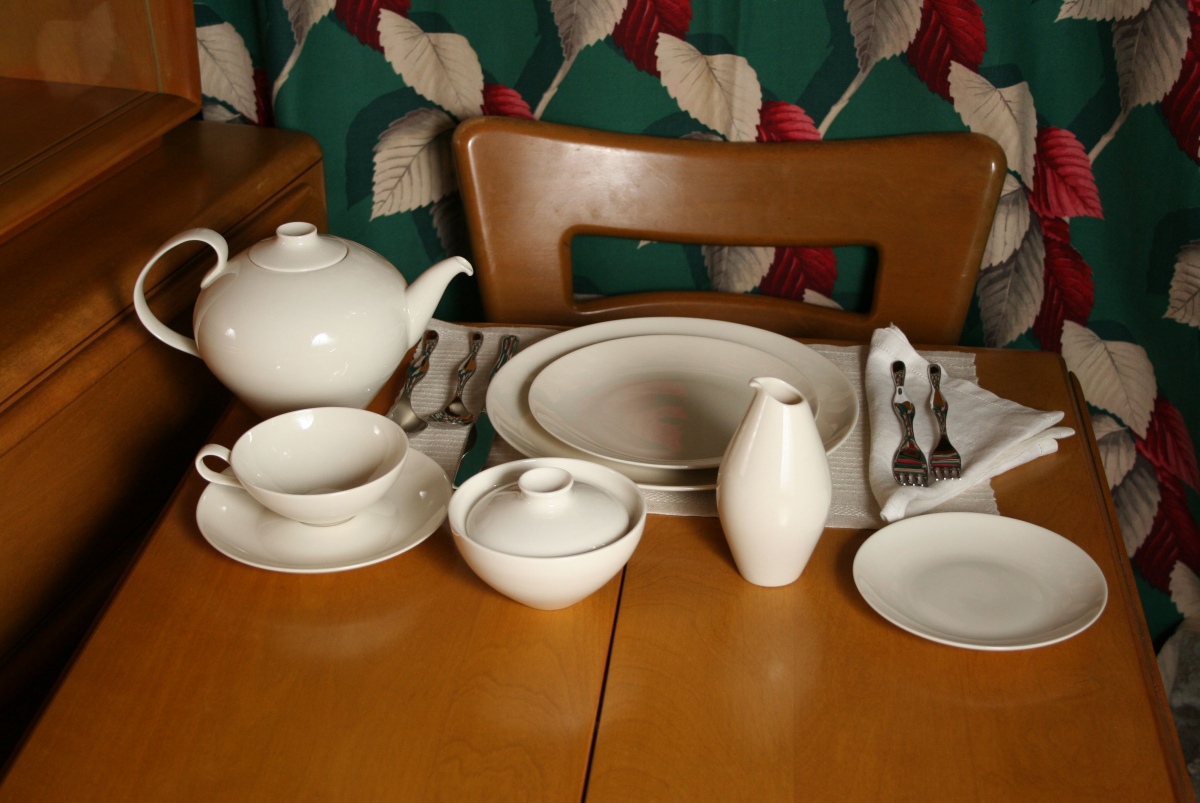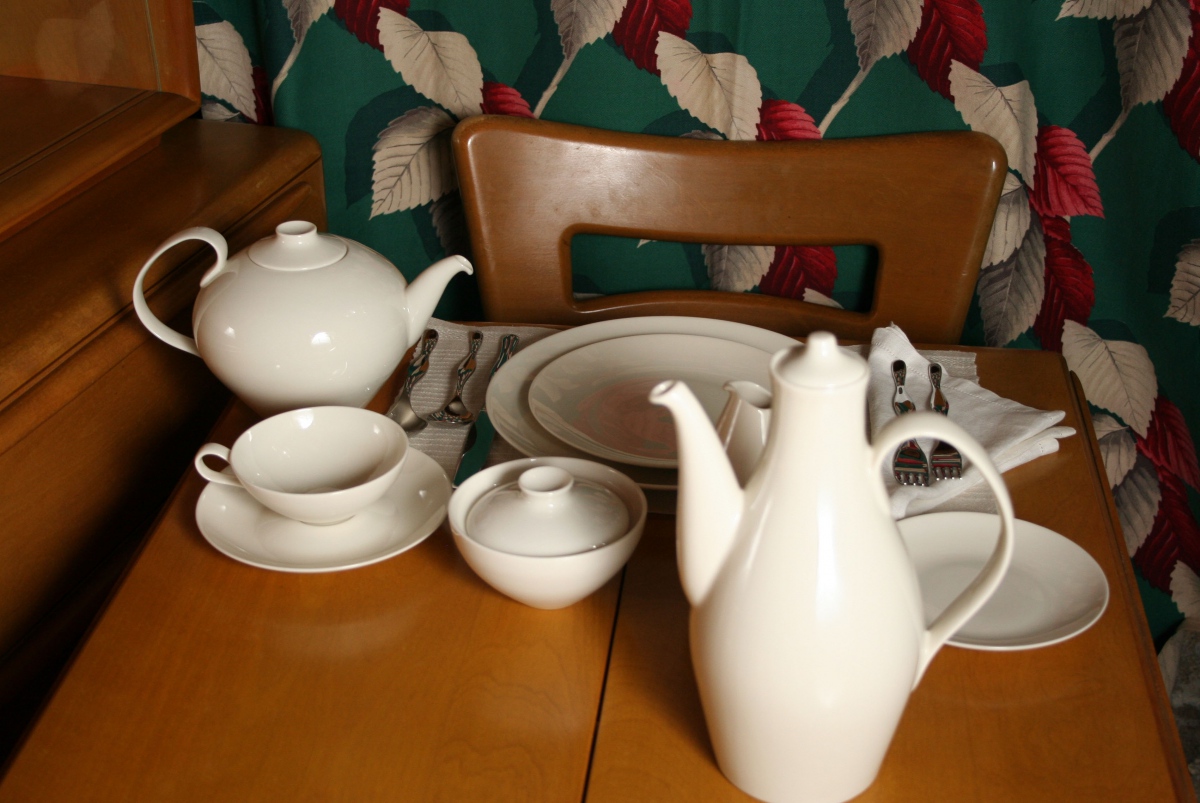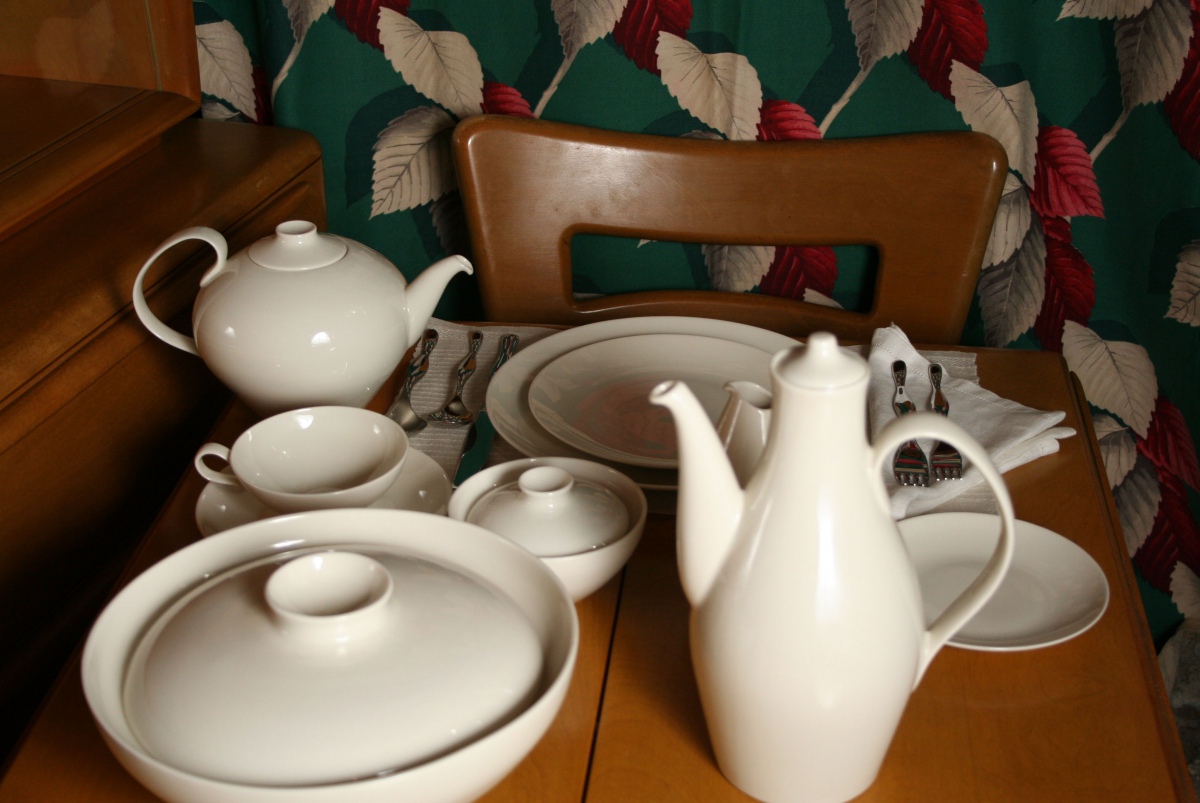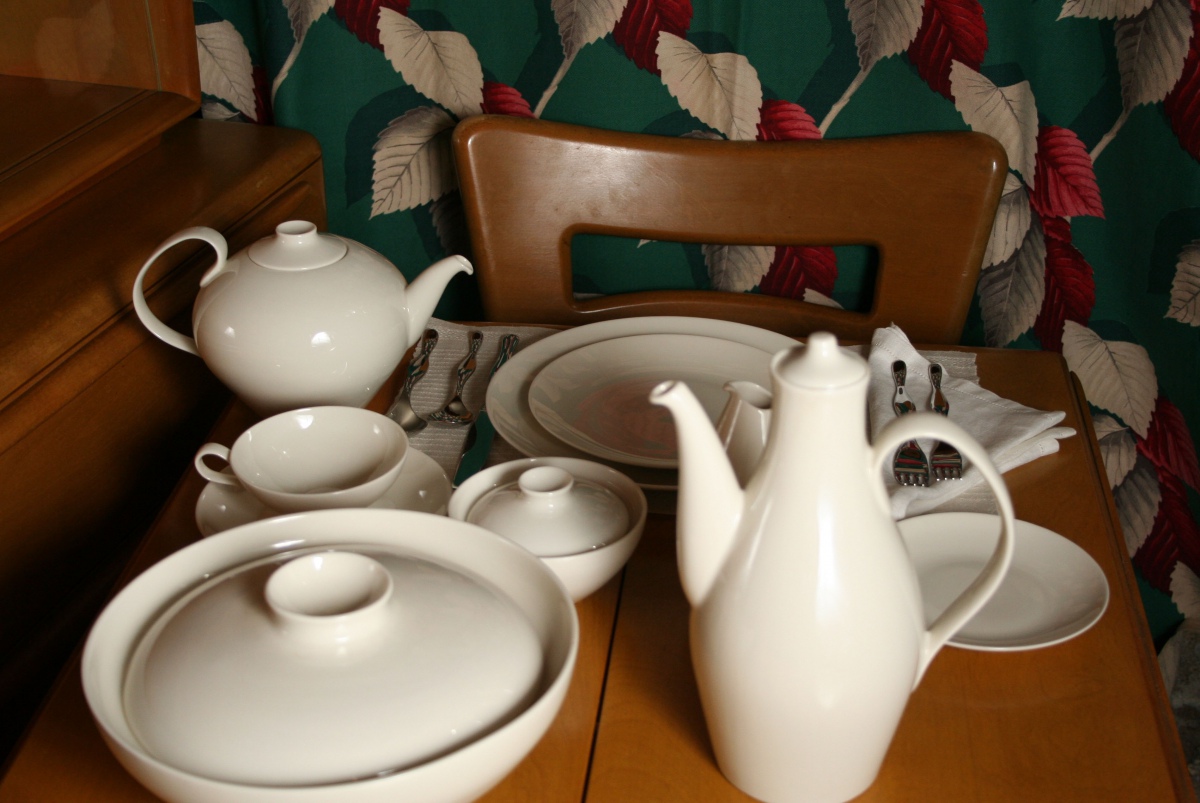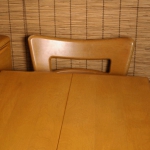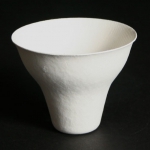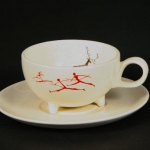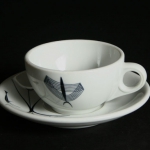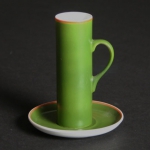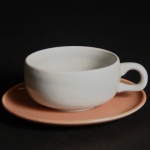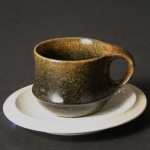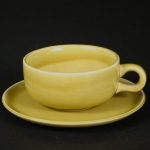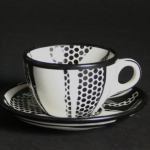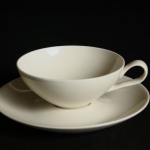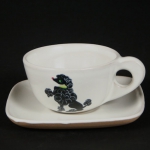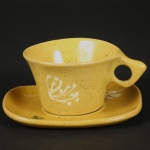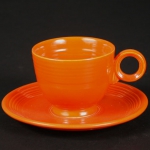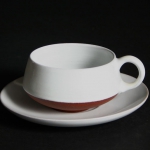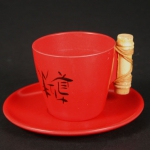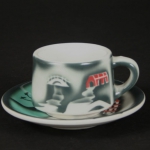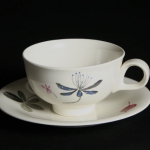Museum White
[Previous] [Main Page] [Next]
One Table Oodles of Dishes:
Eva Zeisel, MUSEUM
In 1942, the newly formed Castleton China Company wanted to produce the first modern china dinnerware in the United States. Louis Hellman, a co-founder of Castleton China and the US representative for the German company Rosenthal Porzellan AG, became interested in modern design after he attended New York’s Museum of Modern Art 1941 exhibition Organic Design in Home Furnishings. Hellman asked the exhibit’s curator, Elliot Noyes, to recommend a dinnerware designer worthy of creating modern dinnerware shapes worthy of its own MoMA exhibition. Noyes recommended industrial designer Eva Zeisel.
In January 1942, Noyes had attended a lecture Handicraft and Mass Production by Eva Zeisel at the Metropolitan Museum of Art in New York, where she described her vision of craftwork as an influence on industrial design. Because of her progressively modern design philosophy and her experience working in the pottery industry, Eva was awarded the Castleton project. Eva credited this commission with establishing her reputation in the United States remarking that “it made me an accepted first-rate designer rather than a run-of-the-mill designer.”
To begin development of the dinnerware line, Eva consulted the writings of Emily Post, the leading authority on manners and etiquette in the United States, to better understand the America idea of elegance at a formal dinner table. MUSEUM was designed to be sufficiently modern to meet MoMA’s high standards and to win the approval of customers with enough means to be able to purchase what was going to be very expensive dinnerware.
With a “family” of 25 shapes based on rounded squares, squared ovals and circles, Eva avoided what she regarded as the “monotony of many modern shapes.” MUSEUM’s fluid, ethereal shapes were designed so that they seemed to be “growing up from the table.” Heavy bottoms added stability, but, taking advantage of the delicacy of porcelain, transitioned to thin edges that had a wonderful transparency. Castleton said that “The forms of MUSEUM dinner service have the quality of superb sculpture and at the same time are functional and durable. They emphasize the inherent beauty of Castleton’s lustrous pearl-tone, its rare translucence. The ware itself, free of decoration, delights the eye and thrills of touch.”
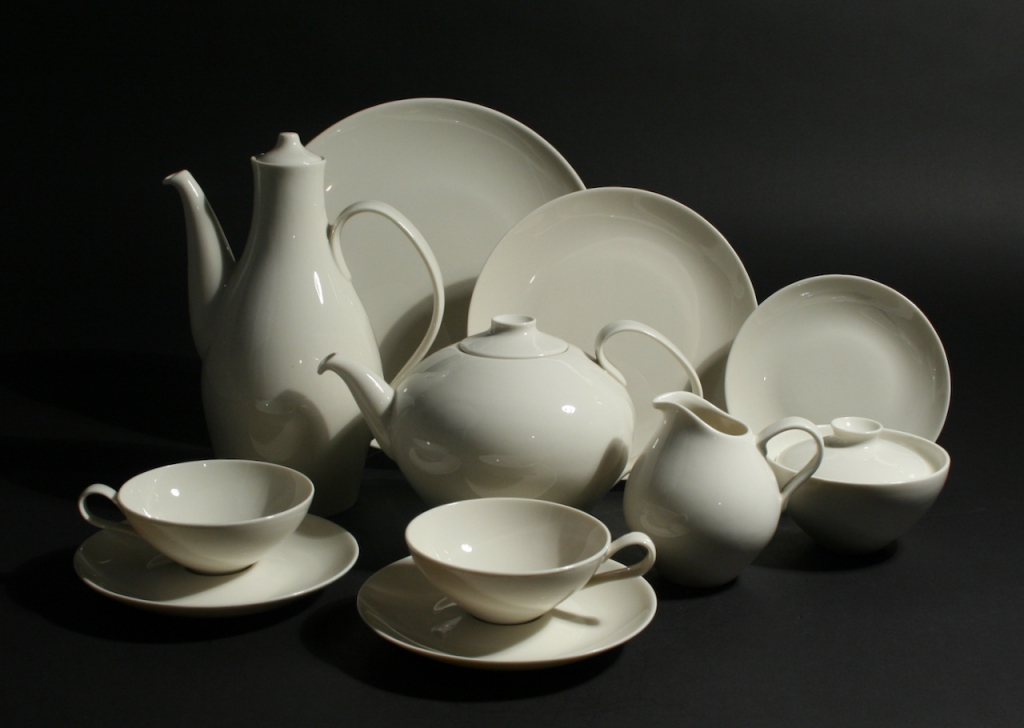
With an eye toward modern dining, many of the pieces Eva designed for the line had not been seen before in formal dinnerware. Castleton noted that “Because MUSEUM is geared to contemporary living, a true product of the times, it includes many useful pieces not found in services of traditional design—the large square salad bowl, the handleless creamer, the open sugar bowl.” During MUSEUM’s development, Eva recalls MoMA’s curators controlling the design of each piece to within “every sixteenth of an inch” and at the same time they were tested for ease of production by Castleton. Dozens of alterations were made to make sure that the resulting design achieved “the effect of balanced movement with quietness” that was sought by Castleton, MoMA, and Eva.
Development was completed in 1943, but because of the war, MUSEUM was not shown until the MoMA’s 1946 exhibition New Shapes in Modern China Designed by Eva Zeisel. It was the first one-woman exhibition at MoMA.
During the exhibition, the china was available by special order through select department stores. Delivery time was promised in four months, but it took three years before MUSEUM went into full production in 1949. Although Eva had patented many of the designs, the contractual rights reverted to Castleton in 1948, leaving them free to do with the dinnerware line as they pleased.
Not all of the 25 pieces designed for the line made it into production. Salt cellars, small spoons, a candleholder/vase and a bouillon bowl were never mass produced. A downward handle that Eva had originally designed for the coffee cup was changed to an upright design without her consultation. To increase sales potential, decorated variations were added when none had originally been intended. They were promoted by their pattern name and for using the “MUSEUM shape.”
MUSEUM was difficult to produce and had to be fired at extremely precise temperatures. Delicate spouts and handle attachments required individual degrees of pressure to control the amount of shrinkage. The slightest error could crack and ruin the pottery. It was said that one of every five pieces were lost during the firing and assembly process. The labor intensive design and high failure rate meant that MUSEUM was very expensive. A service for twelve retailed for $300 ($3280 in 2020 figures).
This heirloom quality china dinnerware was “hailed both in America and Europe as marking a new epoch in ceramic history.” In its April 1959 issue, Fortune magazine in collaboration with the Institute of Design, and their director Jay Doblin, published a list of the “The 100 Best Designed Products.” Eva’s MUSEUM dinnerware for Castleton made 53 on the list. MUSEUM production continued for almost forty years until the late seventies.
Eva Zeisel was one of few women to pursue an industrial design career in the early twentieth century. Her exceptional designs would make her one of the most celebrated industrial designers of the twentieth and early twenty-first centuries.
Born Eva Striker in 1906, in Budapest, Hungary, as a youngster, she had shown an artistic ability and curiosity. Her education and surroundings gave her a strong interest in the history and the current state of art, architecture, design and culture. She studied painting and seemed destined for a career as a fine artist. Although she was creative, and a dreamer, she was also pragmatic. In 1924, she became a pottery apprentice, deciding to learn pottery because that trade skill would provide her with means to support herself financially as a fine artist. At the time, it was not considered socially acceptable for women to apprentice as potters or artisans. In 1925, Eva set up her own pottery studio in the former gardener’s shed in the garden of her family’s home where she produced “black pottery” a well-known type of Hungarian folk pottery.
In 1926, she began working as a freelance designer for Kispester-Granit of Budapest. In preparation, Eva became acquainted with what she referred to as the “first mass-production pottery factory in Hungary.” Eva’s work at Kispester was whimsical, and had a flair of disorganized spontaneity, that she worked out through sketching, paper cut-outs and hand-modeling…a technique that she would use throughout her design career. During this time, she continued to indulge in her interest of art and cultural modernism, tempered with her respect for history and traditional Hungarian folk art.
Eva moved to Schramberg, Germany in 1928 to accept a job as the sole designer for Schramberger Majolikafabrik, which specialized in the manufacturer of household items such as dinnerware, vases and lamps. Not having the necessary drafting skills that the job required, she begged a qualified friend to teach her those skills during a day of intensive training. When asked by Schramberger whether she wanted to create new forms on a potter’s wheel or by drafting, she chose design by drafting to show that she was a real industrial designer, not a craftsman. Although Eva had designed for mass-production at Kispester, it was at Schramberger that she first consciously considered herself to be a designer for industry, a rare distinction for a woman of that era. Feeling that her Schramberg designs deserved recognition, Eva had requested that her signature be used in their pottery marking. Schramberg refused and in early 1930, Eva left the company to look elsewhere for new work and opportunities.
After several jobs in the Russian ceramics industry—Eva was named artistic director of the Russian China and Glass Trust. In May 1936, while living in Moscow, she was arrested and was falsely accused of participating in an assassination plot against Joseph Stalin. She was held in prison for 16 months, 12 of which were spent in solitary confinement. In September 1937, she was released and deported to Vienna, Austria. Some of her prison experiences form the basis for Darkness at Noon, the anti-Stalinist novel written by her childhood friend Arthur Koestler. It was while in Vienna that she connected with her future husband Hans Zeisel, later a legal scholar, statistician, and professor at The University of Chicago. A few months after her arrival in Austria the Nazis invaded, and Eva took the last train out. She and Hans met up in England where they married and sailed for the US with $67 between them.
In the United States, Eva had to reestablish her reputation as an designer. Beginning in 1937, she started teaching industrial ceramic design at Pratt Institute in New York and developed a working relationship with the Bay Ridge Specialty Company in New Jersey—where she designed pottery and her Pratt students could get real world experience in the pottery industry. Working with student Francis Blod, together they designed Stratoware for Sears, the first line of dinnerware that used Eva Zeisel’s name in its promotion.
Along with her 1942 MoMA and Castleton China Company MUSEUM dinnerware design commission, Eva would receive many more dinnerware design commissions and continue to work on other important industrial design projects throughout the 1950s and until her initial retirement in 1964. She was one of the few industrial designers who was able to effectively use her name in the promotion of her designs.
Zeisel stopped designing during the sixties and seventies to work on American history writing projects and a memoir of her time spent in a Soviet prison. In 1984, after a highly successful retrospective museum exhibition of her work Eva Zeisel: Designer for Industry, Eva returned to design. Among those designs were glassware, ceramics, furniture and lamps for the Orange Chicken; porcelain, crystal and graphic prints for KleinReid; glassware and giftware for Nambé; a tea kettle for Chantal; Classic-Century dinnerware made by Royal Stafford, combining pieces from her Hallcraft Tomorrow’s Classic and Century, with many pieces made from the original molds; a cutlery set for Crate&Barrel; and the Granit stoneware dinnerware set for Design Within Reach. Many of her later designs found the same success as her earlier designs.
Eva continued designing until her death in 2011 at the age of 105. Truly one of the most important industrial designers of the 20th century, Eva Zeisel’s work is in the permanent collections of museums throughout the world, and many of her useful designs are still in production.
Castleton China, Inc. began making fine porcelain in 1901 when New Castle China was created after purchasing the New Castle Shovel Works factory in New Castle, Pennsylvania. Soon after, the company acquired Shenango Pottery, a company that produced hotel wares and semi-porcelain dinnerware. In 1909, under the leadership of James MacMath Smith, they reorganized as Shenango Pottery Company.
In 1936, driven by fear of France being invaded by Hitler and the Nazi forces and to eliminate high American import duties, Haviland China of Limoges, France asked Shenango Pottery to produce Haviland products. From 1936 to 1958, Shenango produced Haviland porcelain with the stamp “Haviland—Made in America.” Rosenthal China of Germany struck a similar deal with Shenango, but these products were marketed under the Castleton China name.
In 1951, Shenango purchased all of the U.S. holdings of the Rosenthal Company, continuing to produce tableware products under the Castleton name. Castleton famously produced several dinnerware sets for the White House, including a commemorative plate for Dwight D. Eisenhower. After being purchased and re-sold several times through the last half of the 20th century, all Shenango Pottery Company production stopped in 1991.
References: Eva Zeisel: Life, Design and Beauty, Pat Kirkham, Pat Moore, Prico Wolfframm (Chronicle Books, 2013); Castleton China Museum, Promotional Brochure (Castleton China, Inc., New York, January 3, 1949); Castleton History (Replacements, Ltd., www.replacements.com).
essay by Scott A. Vermillion
